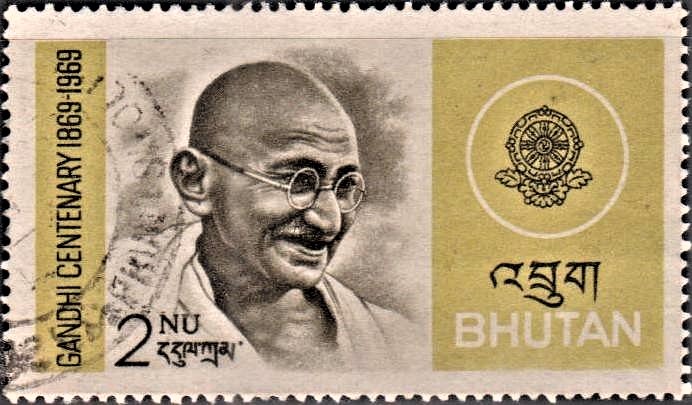
Bhutan on Mahatma Gandhi
Complete set of 2 nos. of commemorative postage stamp on the Birth Centenary of Mahatma Gandhi :
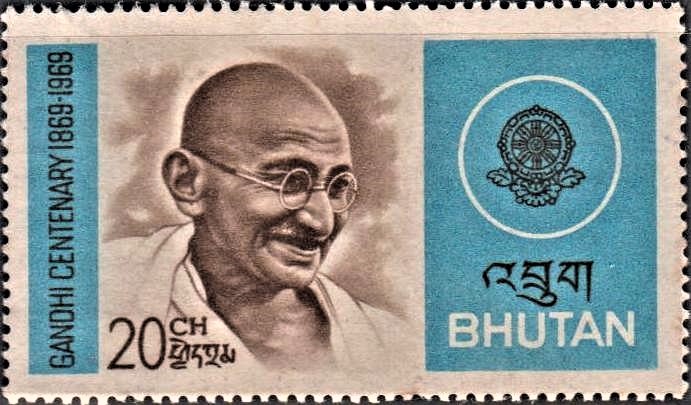
 Issued by Bhutan
Issued by Bhutan
Issued on Oct 2, 1969
Type : Stamps, Postal Used
Values : 20 CH & 2 NU
Colour :
20 CH – Peacock Blue & Dark Brown
2 NU – Gold Green & Raw Sienna
Size : 5.8 cms x 3.327 cms.
No. of perforation : 13 x 13
Paper : Unwatermarked Adhesive Stamp paper on reels
Quantity printed : One Lakh Stamps of each denomination
Number of Stamps to a sheet : 48 Stamps
Printing process : Photogravure
Designed and printed at : India Security Press, Nasik Road, on the basis of lay-out prepared by Mr. Shashikant Jha, Calcutta
Name : Mohandas Karamchand Gandhi
Born on Oct 2, 1869 at Porbandar State, Kathiawar Agency, British Indian Empire [now Gujarat, India]
Died on Jan 30, 1948 at New Delhi, India
About :
- On October 2, 1969 Bhutan joins the rest of the world in celebrating the Birth Centenary of the great Indian leader and prophet Mahatma Gandhi.
- At the age of 19 he sailed for England to study law after taking a vow not to touch meat, wine or woman. He was called to the bar in 1891. After briefly practising law in India, he left for South Africa in 1893 on an important case.
- His experience in South Africa was a turning point in his life. His conscience revolted on seeing the sad plight of Indians living there. He started a passive resistance movement known as “Satyagraha” to fight unjust colour prejudice by pitting soul-force against physical-force. In 1896 he visited India to acquaint Indian leaders about conditions of Indians in South Africa. On his return, he was arrested several times but he succeeded in improving to a considerable extent the living conditions of Indians in South Africa.
- On his return to India in 1915, he founded an Ashram at Sabarmati and began working for the uplift of ‘Harijans‘ or the untouchable caste. Championing the cause of peasants, he successfully launched his first ‘Satyagraha‘ movement at Champaran in Bihar in 1917. In 1919 he entered active politics by leading a nation-wide strike against the Rowlatt Act. From this time onwards the life story of Mahatma Gandhi became the history of India. His appeal to wear khadi and his speeches and articles electrified the whole nation. On 26th January, 1930 he drew up a pledge for the complete independence of India. On 12th March, 1930 he began his famous Dandi march to fight against the unjust salt law. The British Government invited him to a Round Table Conference in London in 1931. The conference yielded no concrete results in terms of India‘s basic demands, and Gandhi returned to India a disappointed man “with hands that were empty of freedom but full of country’s honour”. He resumed his movement and succeeded in gaining some autonomy for the country under the Government of India Act, 1935 under which popular Governments were set up in various provinces of India.
- In 1942 he started an individual civil disobedience campaign and after the failure of the Cripps Mission, he launched a “Quit India” movement in 1942. The whole country was behind him and the British Government realised that independence to India could no longer be delayed. In May 1947, much against his will, he accepted the partition of India. After independence, he made every endeavour to ensure Hindu-Moslem unity by touring the country extensively. On 30th January, 1948 this apostle of Ahimsa was assassinated by a young Hindu fanatic.


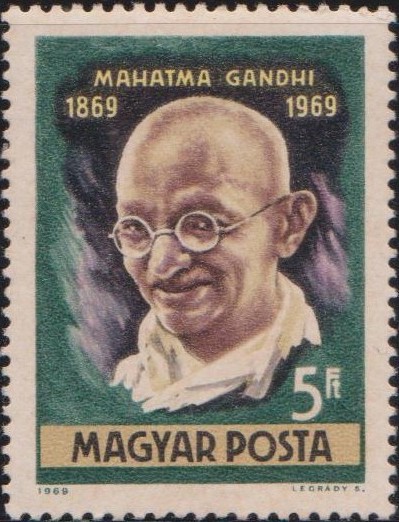
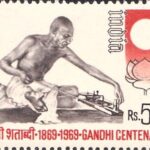
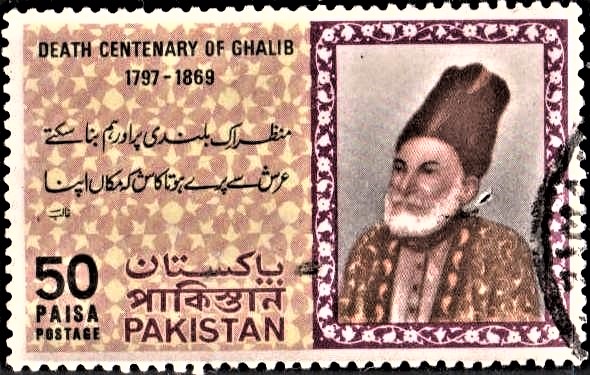
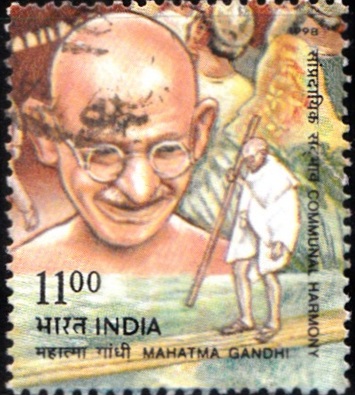
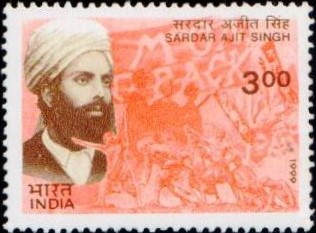
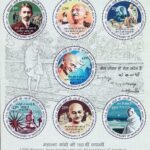
Man You’ve got some writing skills.
Thanks for the good words.